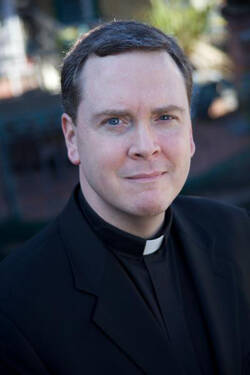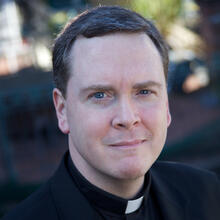Seated directly below the canopied altar, facing the facade of the basilica and just to the left of the statue of St. Paul, I was about 20 feet from the pope when he entered St. Peter’s Square. Standing in a modified open jeep, under a long-awaited, bright blue Roman sky, the former Jorge Mario Bergoglio, S.J., appeared overwhelmed. He quickly found his stride, however, bending over to kiss a baby and even leaving his vehicle to greet a disabled child and his family. Frankly, if he hadn’t looked a little uncomfortable, I would have been worried. An experience like this, an experience like no other, should unsettle a humble man.
As hard as it is to believe, given the grandeur and beauty of the surroundings, the installation of Pope Francis on March 19 was a pretty modest affair, many light years away from the papal coronations of old. In fact, the symbols of the papal office, the pallium (the white wool garment worn at the neck) and the fisherman’s ring, were given to the new pope during a brief rite before the Mass properly started; thus was avoided any appearance that the installation is a sacrament.
Other innovations included the prominent placement and participation of representatives of the separated Orthodox churches and the proclamation of the Gospel in Greek, the language in which the texts were originally composed. In all, there were perhaps a dozen significant changes to the day’s proceedings, every one of them for the sake of simplicity or inclusion.
The crowd got it. Most were moved by the new pope’s gestures. Not a few were in tears as they came forward for Communion. My life as a priest has not been long, but distributing Communion at that liturgy is a high point and will likely remain so—not because of the surroundings or the occasion, though both of those helped. No, it was the unity-in-diversity of the moment that was so moving, a truly eucharistic moment.
Every kind of human face could be seen at the rails, every language could be heard between the loggias, every category and condition of person was present: young, old, clerical, lay, fit and ill. Yet at the moment of Communion, we were truly one church, one visible body of Christ. God’s dream “that they may all be one” was realized that day in the piazza. “As you, Father, are in me and I am in you, may they also be in us, so that the world may believe that you have sent me.”
I suspect that this is the last issue of America that will have Pope Francis on the cover—at least for a while. Still, you never know. What we do know is that these past two months have changed the church—in exactly what way and to what degree remains to be seen. Yet we who have lived through these days cannot help but feel changed.
As I headed for the airport after the installation Mass, the blue sky gave way to gray, and my time in Rome ended as it had begun—in the rain. This time, however, I felt no fear as I settled into my seat on Alitalia. Be not afraid, I thought. The Lord has kept his promise. His spirit is still among us, guiding our earthly pilgrimage through the gaudium and the spes, as well as the painful struggles of modern life. The church’s challenges are great, her scandals not few; but where “sin increased, grace abounded all the more.”
When I left America’s offices for Rome, we were just about to ship the issue with a picture of St. Peter’s Basilica on the cover. Our art director, Stephanie Ratcliffe, and I chose to let you decide whether the sun was rising or setting over the basilica.
Well, I don’t know about you, but I’ve made up my mind: a new day is breaking. Hope, the One who is hope, still lives. On behalf of the editors and staff of America, thank you for accompanying us on this incredible journey.








